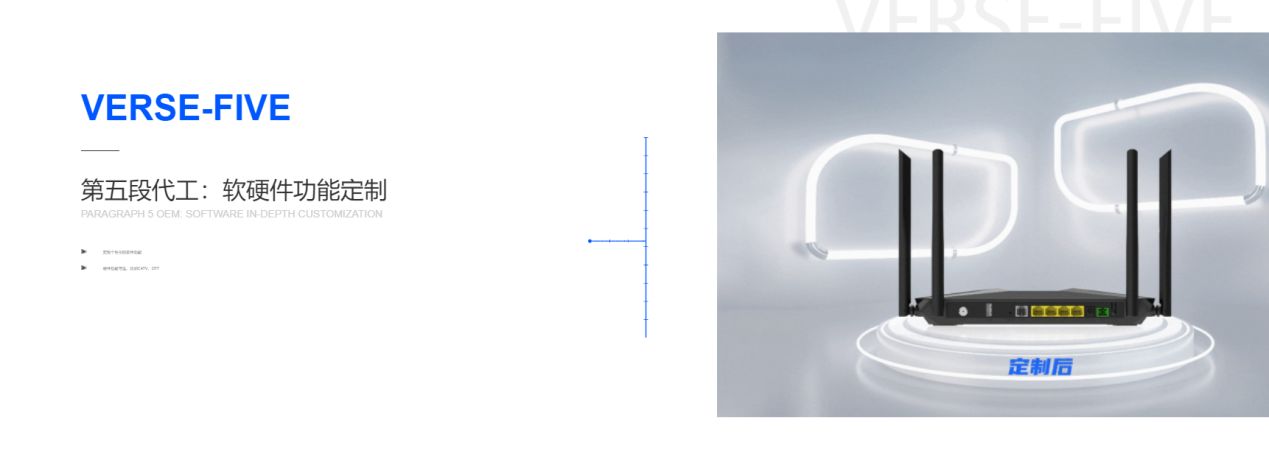No matter which method is used to achieve network port communication, it cannot be separated from relevant standard protocols. However, the Ethernet involved in our company's ONU product series mainly follows the IEEE 802.3 standard. Below is a brief introduction to the IEEE 802.3 frame structure
IEEE802.3 Frame Structure
The function of the Media Access Control sublayer (MAC) is the core technology of Ethernet, which determines the main network performance of Ethernet. The MAC sublayer is usually divided into two functional modules: frame encapsulation/unpacking and media access control. When connecting the functions of this sublayer, the first step is to understand the frame structure of Ethernet
|Precode | Frame Start Delimiter | Destination Address | Source Address | Length | Data | Frame Check Sequence|
|7 bytes | 1 byte | 6 bytes | 6 bytes | 2 bytes | 46-1500 bytes | 4 bytes|
(1) Precode: A code containing 7 bytes of binary "1" and "0" intervals, i.e. 1010... 10, totaling 56 bits. When the frame is uploaded on the media, the receiver can establish bit synchronization, because in the case of Manchester code, the transmission waveform with "1" and "0" intervals is a periodic square wave.
(2) Frame First Delimiter (SFD): It is a binary sequence of 10101011 with a length of 1 byte. Once this code passes, it represents the actual start of a frame to enable the receiver to locate the first bit of the actual frame. That is to say, the actual frame consists of the remaining DA+SA+L+LLCPDU+FCS.
(3) Destination Address (DA): It specifies the destination address that the frame is attempting to send to, consisting of 6 bytes. It can be a single address (representing a single station), multiple addresses (representing a group of stations), or full addresses (representing all stations on the local area network). When multiple addresses appear at the destination address, it means that the frame is simultaneously received by a group of stations, known as "multicast". When the destination address appears as full address, it means that the frame is received simultaneously by all stations on the local area network, known as "broadcast". The type of address is usually determined by the highest bit of DA. If the highest bit is "0", it indicates a single address; A value of '1' indicates multiple addresses or full addresses. When the address is full, the DA field has a full "1" code.
(4) Source Address (SA): It indicates the address of the station sending the frame, which, like DA, occupies 6 bytes.
(5) Length (L): Two bytes in total, representing the number of bytes in LLC-PDU.
(6) Data link layer protocol data unit (LLC-PDU): It ranges from 46 to 1500 bytes. Note that the minimum LLC-PDU length of 46 bytes is a limitation, which requires all stations on the local area network to be able to detect this frame, ensuring normal network operation. If the LLC-PDU is less than 46 bytes, the MAC sublayer of the sending station will automatically fill in a "0" code to complete.
(7) Frame Check Sequence (FCS): It is located at the end of the frame and occupies a total of 4 bytes. It is a 32-bit redundancy check code (CRC) that checks the contents of all frames except for the preamble, SFD, and FCS. The CRC check results from DA to DATA are reflected in FCS. When the sending station sends a frame, it performs CRC verification bit by bit while sending. Finally, a 32-bit CRC test is formed and filled in the FCS position at the end of the frame for transmission on the medium. After receiving the frame at the receiving station, CRC verification is performed bit by bit while receiving the same frame starting from DA. If the checksum formed by the final receiving station is the same as the checksum of the frame, it indicates that the frame transmitted on the medium has not been destroyed. On the contrary, if the receiving station believes that the frame has been destroyed, it will request the sending station to resend the frame through a certain mechanism.
The length of a frame is DA+SA+L+LLCPDU+FCS=6+6+2+(46-1500)+4=64-1518, that is, when LLC-PDU is 46 bytes, the frame is the smallest and the frame length is 64 bytes; When LLC-PDU is 1500 bytes, the maximum frame size is 1518 bytes.
Our company's relevant network hot selling products cover various types of ONU series products, including AC ONU/communication ONU/intelligent ONU/box ONU, etc. The above ONU series products can be used for network needs in various scenarios. Welcome everyone to come and have a more detailed technical understanding of the product.






